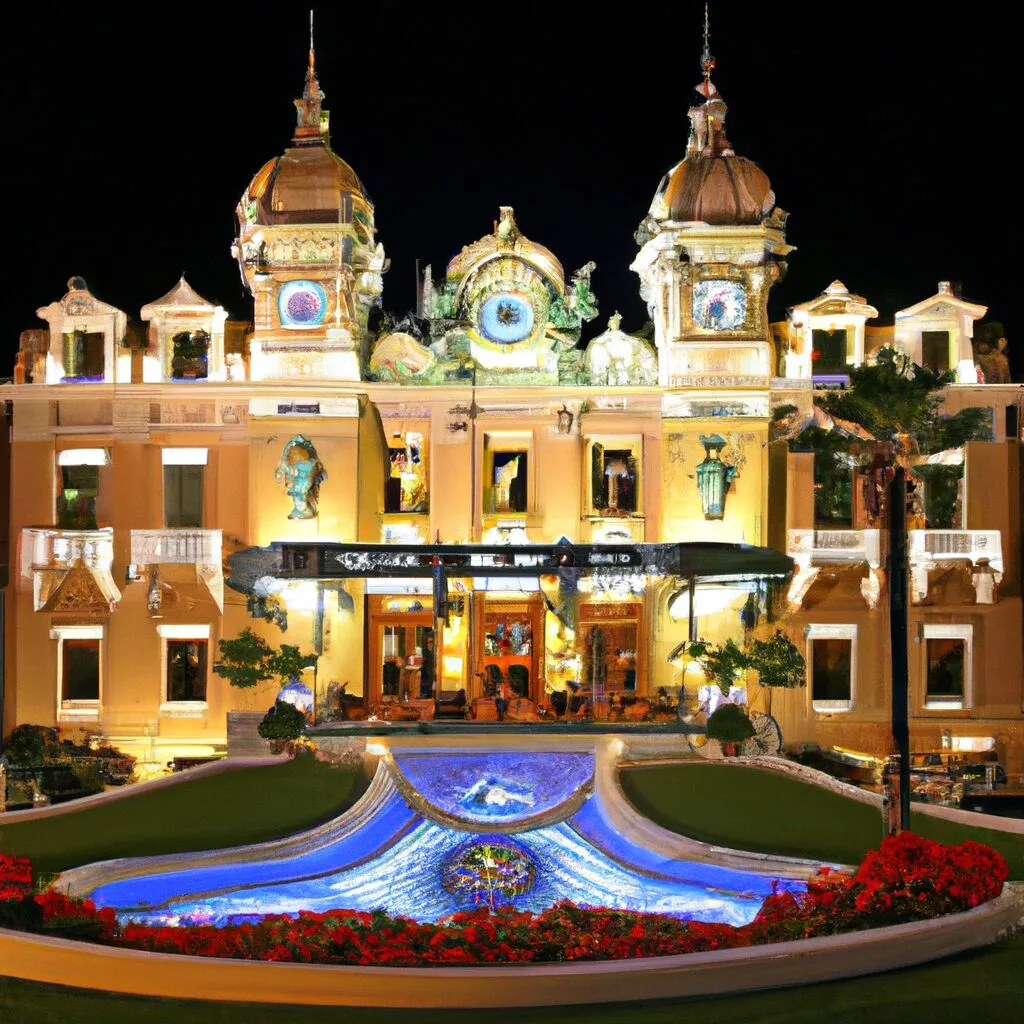Tucked in the vibrant heart of Monaco, the Monte Carlo Casino isn’t just a gambling establishment; it’s a historical beacon and an architectural masterpiece. Since its doors opened in 1863, the casino has been an essential player in Monaco’s rise to fame as a luxury tourist destination. More than just a venue for risking fortunes, it’s an integral part of the principality’s culture and economy, though it’s not without its criticisms.
Architectural Marvel and Historical Haven
Designed by the famed Parisian architect Charles Garnier, who also designed the Paris Opera House, the casino is an exemplar of the opulent Beaux-Arts style. Visitors often praise the breathtaking atrium, paved in marble and surrounded by 28 Ionic columns made of onyx. The gaming rooms, each more lavish than the last, feature incredible frescoes, sculptures, and a stunning allegory painted on the ceiling by the artist Gabriel Ferrier.
The history of Monte Carlo Casino is deeply intertwined with that of Monaco itself. Originally conceived by Princess Caroline to attract the wealthy elite of Europe and save the Grimaldi family from financial ruin, its success was initially anything but assured. Early struggles were so significant that the future of the entire principality was in jeopardy. However, with the recruitment of François Blanc, a casino magnate with a knack for success, fortunes dramatically turned around by the late 19th century. This shift not only secured the casino’s place in gaming lore but also underpinned the economic structure of Monaco.
Economic and Community Impact
The casino has played a pivotal role in shaping the local economy. It is one of the primary sources of income for the state’s budget, contributing significantly to various public welfare schemes, including education, healthcare, and infrastructure development. The prosperity Monte Carlo Casino has brought to Monaco is visible in the opulent lifestyle and the well-maintained public spaces that are enjoyed by both residents and tourists.
However, the economic dependency on the casino has not been without its detractors. Some locals feel that it overshadows other potential areas of economic development and creates a monoculture reliant on tourism and gambling. This reliance is particularly criticized during global economic downturns, where lower tourist numbers can have a broader impact on the principality’s economy.
Casino Operations and Gaming Experience
Monte Carlo Casino offers a diverse range of games, from Roulette and Poker to Trente et Quarante, as well as an array of slot machines. The high-roller rooms are the epitome of exclusivity and luxury, attracting some of the world’s wealthiest gamblers. Regular patrons often reference the professionalism and friendliness of the staff, though some newcomers have noted the experience can be intimidating due to the high stakes and the opulent setting.
A less frequently discussed aspect is the casino’s policy of forbidding locals from gambling, a law that dates back to the mid-19th century and intended to prevent Monegasques from financial ruin. While it successfully protects residents, it also segregates them from a significant part of their culture and heritage, a point of contention that surfaces in local discourses now and then.
Cultural Significance and Tourism
Besides its gaming floors, the Monte Carlo Casino is famed for its role in popular culture, notably in films like “GoldenEye” and “Casino Royale.” This notoriety ensures a steady stream of tourists eager to see the casino’s grandeur in person, which in turn fuels Monaco’s vital tourism sector.
Moreover, the casino complex houses the Opéra de Monte-Carlo and hosts ballet and theater productions, thereby enriching the cultural landscape of Monaco. Its role as a cultural hub extends beyond gambling and into the arts, which helps to soften some of the criticisms about its gaming operations.
Conclusion
Monte Carlo Casino remains a spectacular blend of history, luxury, and entertainment. While it drives the economy and enhances the cultural fabric of Monaco, it also poses challenges and moral questions about economic dependency and local participation. Like any storied institution, it is not without its issues, but its benefits to Monaco are undeniable, making it a jewel in Monaco’s lavish crown.
This multifaceted impact makes the Monte Carlo Casino not just a place for betting and winning but also a cornerstone of Monaco’s past, present, and future. Whether admired for its architectural beauty, historical significance, or critiqued for its economic influence and exclusivity, it remains an enduring symbol of luxury and an essential stop on the tourist map.

David Harrison stands tall in gambling journalism, marrying his firsthand casino experiences with a deep understanding of betting psychology. His articles transform complex gambling jargon into engaging tales of strategy and chance, making the world of betting accessible and enjoyable. David’s knack for narrative extends beyond print, making him a sought-after speaker on gambling trends and future bets. In the realm of gambling, David is both a scholar and a storyteller, captivating readers and listeners alike.
















